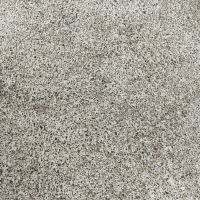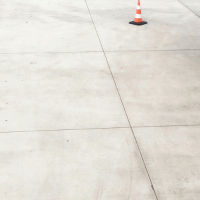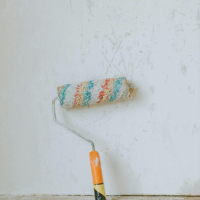Introduction
When finishing concrete floors, several common mistakes can lead to poor performance, increased costs, and structural failures. These errors often stem from misconceptions about materials and processes, inadequate preparation, and improper application techniques. Understanding these pitfalls is crucial for achieving durable and aesthetically pleasing concrete surfaces.
Misconceptions and Material Misuse
Surface preparation plays a critical role in ensuring the effectiveness of adhesive bonds in construction and repair applications. A prevalent error made by professionals in the field is the practice of mechanically roughening the surface to enhance the bond. This approach, while seemingly logical, can be counterproductive. Overly aggressive surface roughening, which can lead to surface damage and micro-cracking, may create an uneven substrate that disrupts the uniform application of bonding agents. Instead, it is vital to focus on thorough surface cleaning and preparation, which are essential steps that significantly increase the likelihood of achieving a solid and lasting bond.
The selection of bonding agents also warrants careful consideration. It is often observed that grout and mortar bond coats are frequently unnecessary and can lead to complications if not applied judiciously. Moreover, incorporating latex emulsions into the bonding process has been shown to sometimes compromise, rather than enhance, bond strength. This unexpected reduction in efficacy can be attributed to various factors, including incompatibility with existing materials or inappropriate application methods. As highlighted by Schrader in 1992, professionals should critically evaluate the need for such bonding agents and consider alternative solutions that may yield better results without adding unnecessary complexity.
Furthermore, applying epoxy and other dense coatings requires a nuanced understanding of material properties and environmental conditions. While these coatings are often valued for their durability and watertight characteristics, they can inadvertently lead to failures if moisture becomes trapped beneath them. This scenario underscores the necessity of selecting appropriate materials tailored to the specific conditions they will face. When moisture cannot escape, it can create many issues, including delamination and degradation of the underlying surfaces. Schrader’s observations from 1992 are a reminder of the importance of assessing not only the immediate benefits of coatings but also their long-term implications in the context of the materials and environments in which they are used. Careful consideration of these factors will significantly contribute to the integrity and longevity of any project involving adhesive bonding or surface coatings.
Construction Practices and Techniques
Condition Evaluation: A significant number of complications in concrete finishing can be traced back to insufficient evaluation of the concrete’s existing condition before the application of final treatments. Conducting a thorough assessment is vital to identify any underlying issues, such as cracks, surface imperfections, or environmental impacts that may affect the longevity and appearance of the finished surface. This comprehensive evaluation, as highlighted by Vaysburd et al. (2004), not only informs the current state of the concrete but also guides the formulation of appropriate strategies that align with structural requirements and aesthetic preferences. Armed with this knowledge, professionals can confidently navigate the finishing process, ensuring the integrity and visual appeal of the concrete surface.
Worker Training: The prevention of design and application errors in concrete finishing processes can be significantly enhanced by focusing on improved education and training programs for workers in the field. By equipping workers with the necessary skills and knowledge, organisations can ensure they are well-versed in the latest materials and techniques for concrete finishing. This enhanced training not only fosters a deeper understanding of the complexities involved in the finishing process but also instils confidence in workers’ abilities to execute their tasks precisely. Vaysburd et al. (2004) highlight that a competent workforce informed about advancements in materials technology and application methods is essential for minimising mistakes. Ultimately, this investment in worker training empowers professionals to deliver higher-quality outcomes, reduce rework, and enhance overall project efficiency.
Surface Treatment and Finishing
Shrinkage and cracking are significant concerns in concrete construction, as they can compromise concrete surfaces’ structural integrity and aesthetic qualities. To effectively mitigate the risk of these issues, applying a shrinkage-reducing agent promptly following the dehydration and deaeration processes of the concrete surface is advisable. This strategic application not only enhances the surface strength of the concrete but also plays a crucial role in minimising drying shrinkage. By addressing these factors early in the curing process, the overall durability and longevity of the concrete structure can be significantly improved, as noted by Takeshi in 1999.
In addition to managing shrinkage, controlling porosity within concrete slabs is essential for achieving optimal outcomes when applying dyes and coatings. Establishing a controlled porosity level before the finishing process can significantly enhance the durability and visual appeal of the concrete surfaces. This intentional management of porosity facilitates superior bonding of dyes and coatings, leading to more vibrant and lasting finishes.
Another critical element in maintaining concrete surfaces is the curing and sealing phase, which should not be overlooked. An absorbent reactive curing agent can create a complex, dense surface layer that effectively blocks moisture permeability. This barrier is essential as it reduces the likelihood of swelling and cracking in the finishing layer due to moisture intrusion. Tadayoshi highlighted the advantages of such curing agents in 2009, noting their effectiveness in preserving the integrity of the concrete by providing a robust defence against environmental factors that lead to deterioration. By ensuring proper curing and sealing techniques are employed, the longevity and resilience of concrete surfaces can be significantly enhanced.
Conclusion
While the insights provided here effectively highlight various common mistakes that individuals may encounter, it is crucial to recognise that there are additional layers to consider when working with concrete floors. Specifically, one must consider the unique environmental conditions the concrete will be exposed to, as these factors can significantly influence its overall performance and durability. This includes temperature variations, humidity levels, and exposure to sunlight, which can all affect how the concrete behaves over time.
Moreover, the intended usage conditions of the concrete surface play a vital role in determining the optimal finishing process. Different applications, such as residential, commercial, or industrial use, may require specific types of finishes that are best suited to withstand various stresses and strains. By tailoring the finishing process to align with these environmental and usage specifics, the immediate aesthetic appeal of the concrete surface can be enhanced, and its resilience and longevity can also be markedly improved. This tailored approach ensures that the concrete flooring will maintain its integrity and appearance for an extended period, ultimately benefiting the overall investment.






